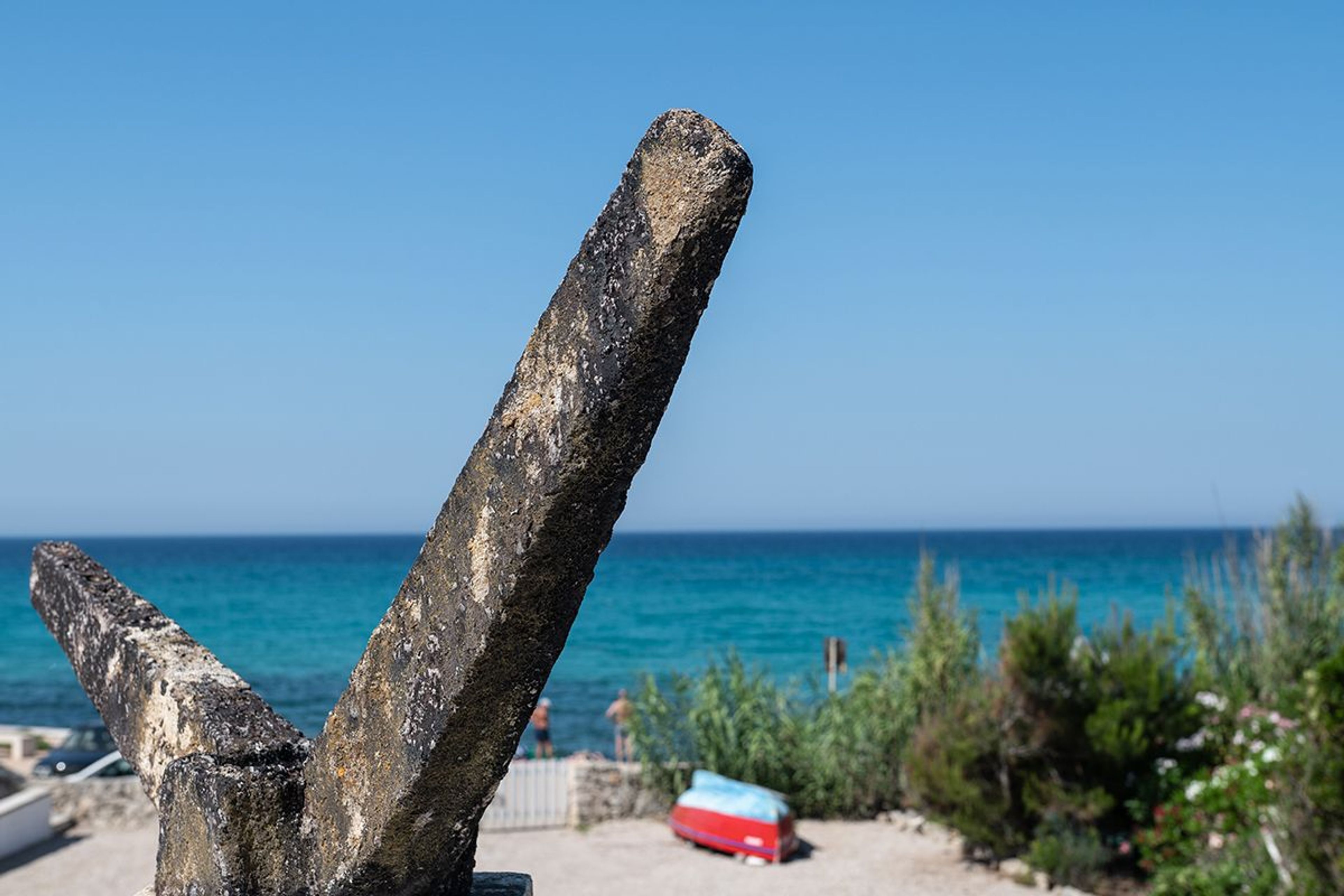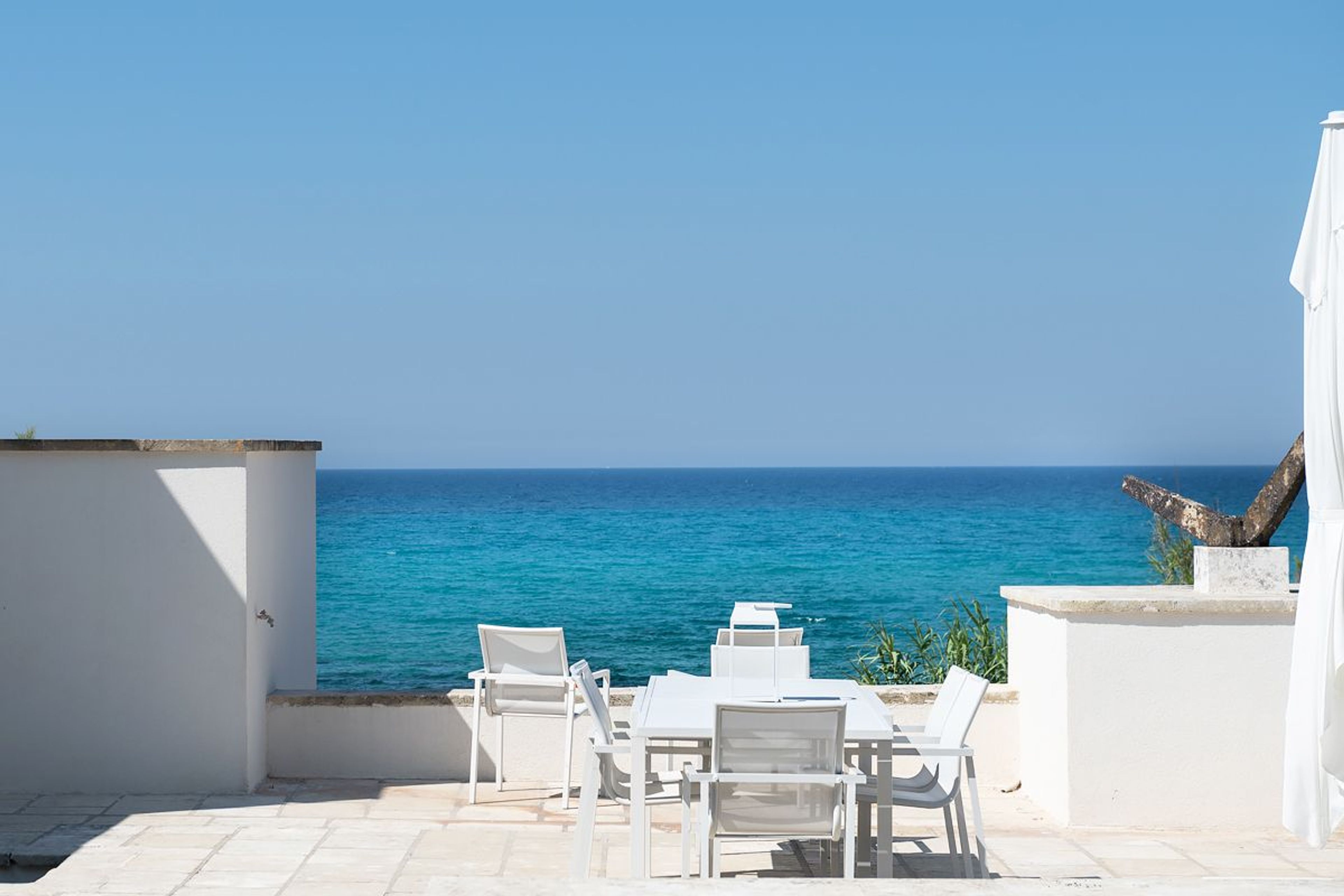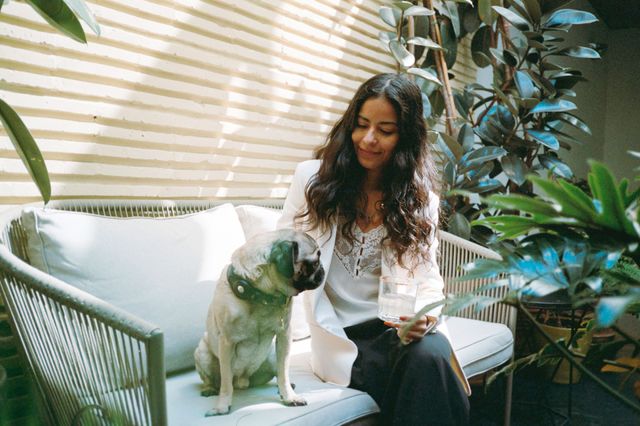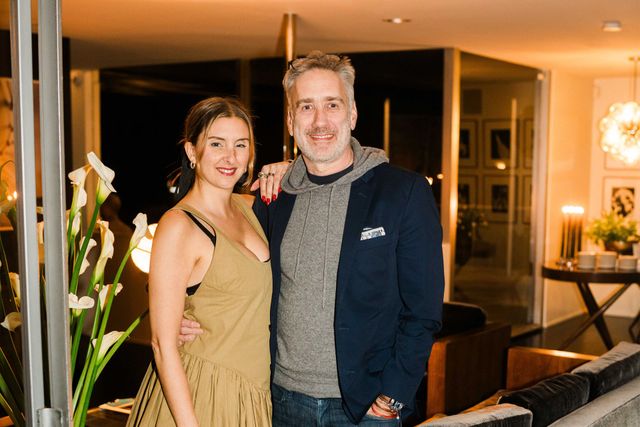Conversation with Renato Torsello
- Category
- Q&A
- Written by
- Stacy Suaya
- Published
- August 27, 2021
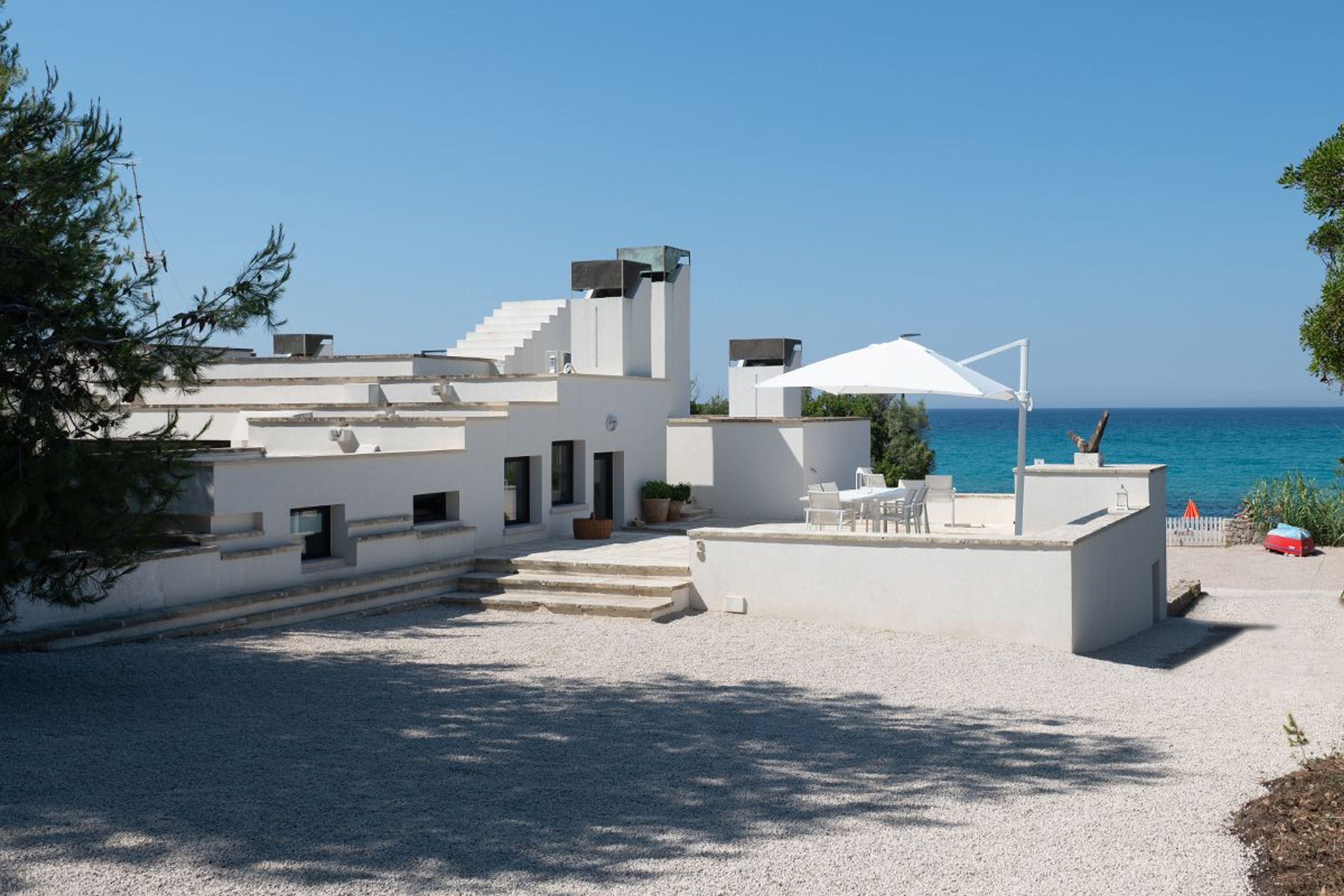
A cubically-inclined holiday home in Italy’s “land’s end” of the Capo Santa Maria di Leuca, Salmone Bianco is backed by a pine forest and the aquamarine waters of the Ionian. Its many levels trace the rolling terrain into water.
The home was designed by B. Paolo Torsello, an architect and architecture professor at University of Venice and later the University of Genoa, involved in many restoration works from the 1970s-00s; castles, churches, a bridge, and even frescoes. One of his most important projects was the restoration of the castle of Charles V in Lecce.
Salmone Bianco was a personal assignment that brought him back to his origins as a designer of his own projects. Torsello conceived of the plans in the 1970s for his older brother; a return to their roots as well, as the brothers grew up in a town near the home and lived their adult lives in other parts of Italy.
“That’s why my dad called the property ‘the white salmon’, because salmons always go back to where they were born,” says Renato Torsello, nephew of B. Paolo, who he considered a dear friend.
We spoke with Renato about his uncle’s legacy, and singular vision for the home he built for his brother, who loved the sea.
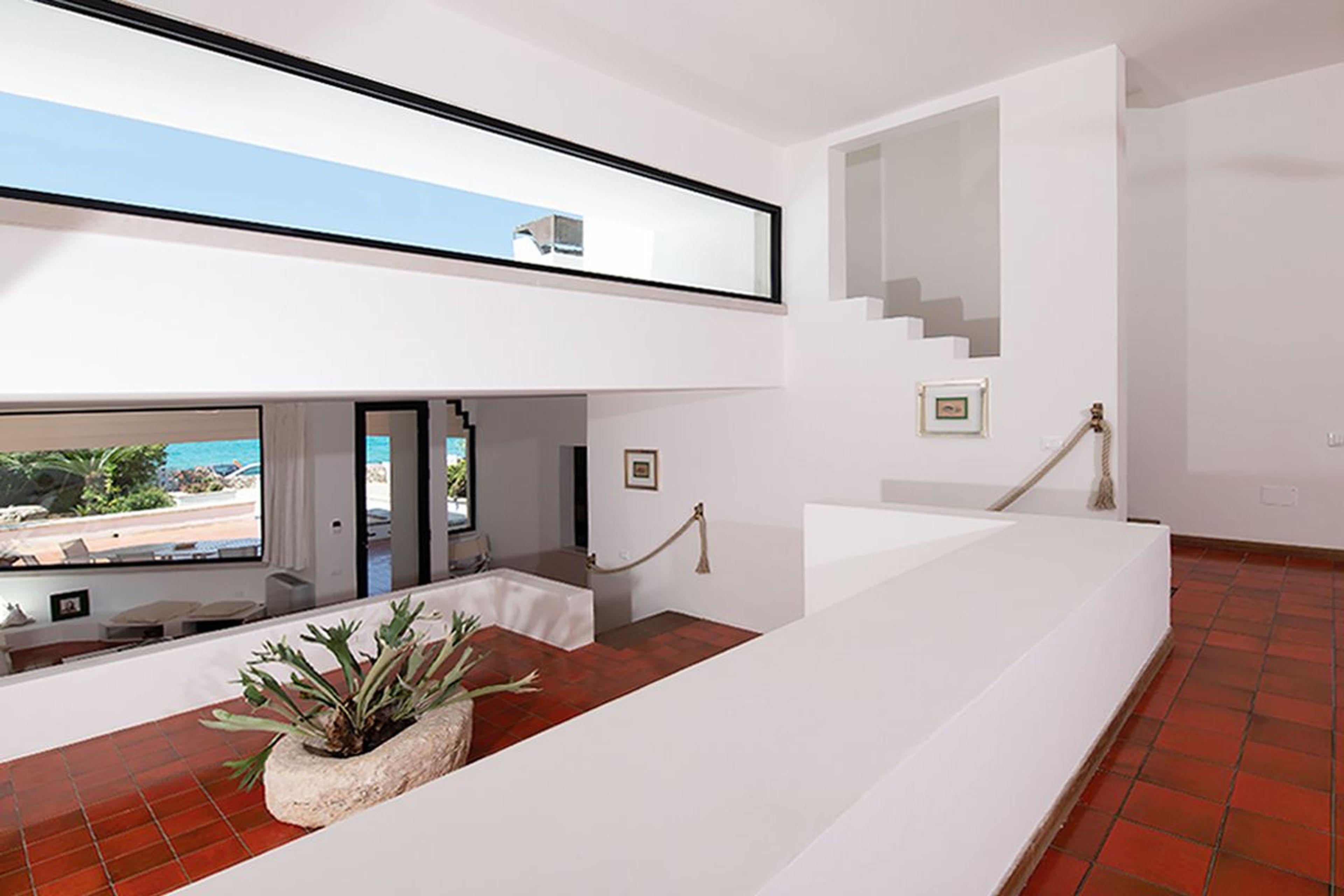
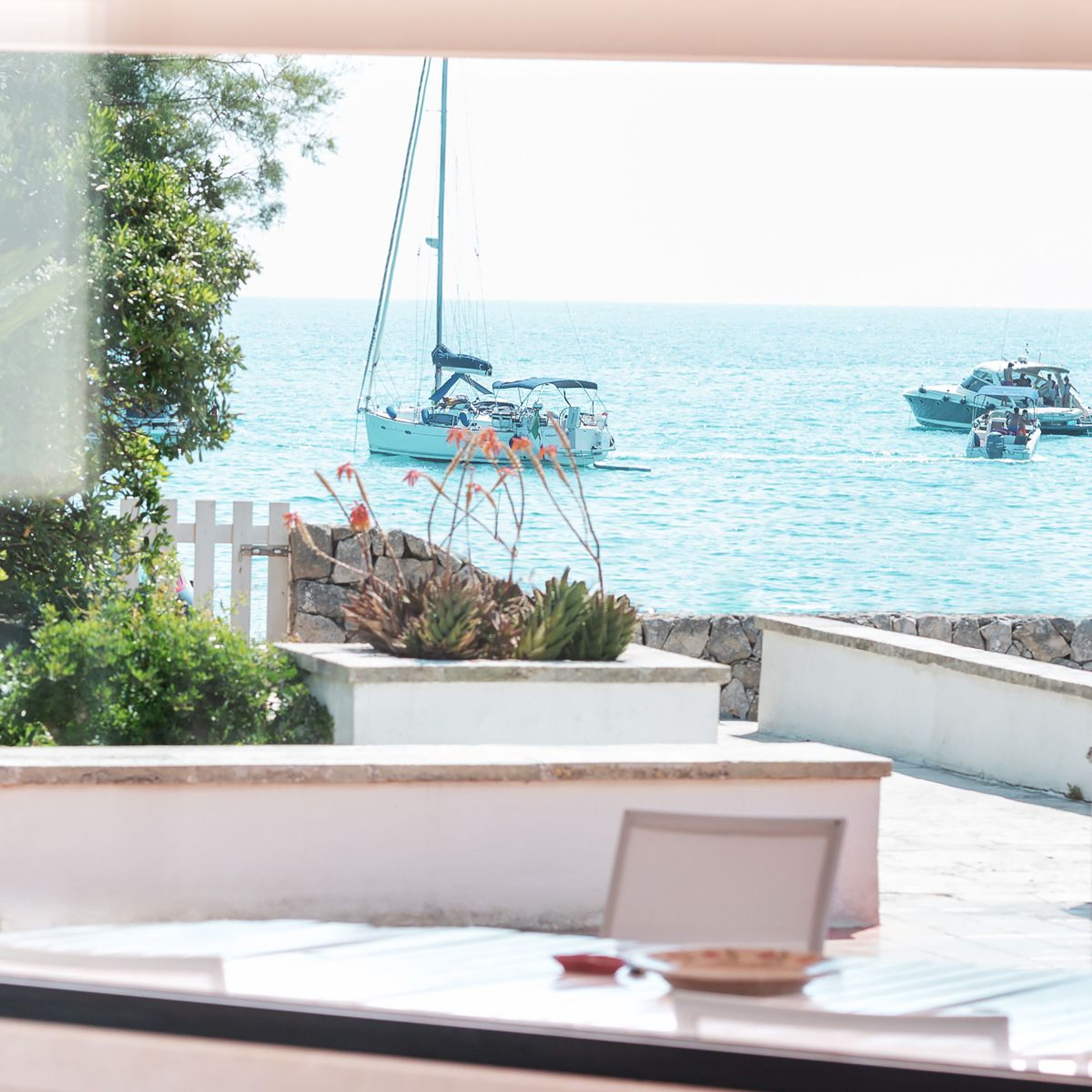
WHAT WAS YOUR RELATIONSHIP LIKE WITH YOUR UNCLE?
Renato Torsello: "Paolo and I grew close when I turned 18. I wanted to study economics in Milan, but my father thought it was too big of a city. He encouraged me instead to go to Venice, telling me about a famous university on the Grand Canal called Ca' Foscari, housed inside a Venetian Gothic palace. No cars and the Venetian style of life attracted me, plus Paolo was there, teaching architecture. So I went [there] and studied economics.
"Paolo was quite an intellectual guy. He and his professor friends spoke a language that was alien to me, were always talking about philosophy and books I had never read – Nietsche, metaphysics, and it was quite a shock to talk with them. He was a very kind and stimulating person, and really helped me to grow intellectually at an age where I needed to be pushed.
"We always kept in touch, and I would go visit him in Genoa, where he eventually moved. I visited him right before he passed and it was very special; just me and him."
WHAT INSPIRED HIM TO CREATE THE SEASIDE HOLIDAY HOME, SALMONE BIANCO?
RT: "Before Paolo got focused on restoration, he did more projects of his own. And my dad, who was an entrepreneur who liked fishing, wanted his younger brother to build him a home on the land where they would go during the summers as kids.
"My dad eventually moved to Rome as an adult - I was born there. But we would drive down to the south every summer for the typical Italian holiday of 3-4 weeks off in August. It was immediately different when we'd show up to different hotels down there - the smell, the color of the land - blood red, rich with oxide, in contrast with the typical white buildings of south Italy, the trulli... and then you enter Salento and you see the pajares.
"Every time we'd come, my dad would catch a big Mediterranean bass. He was an excellent fisherman. After many summers of experiencing this happiness, he decided to have a home here. That was the 70s and he found an amazing piece of land, with both sand and rock and is right on the seaside."

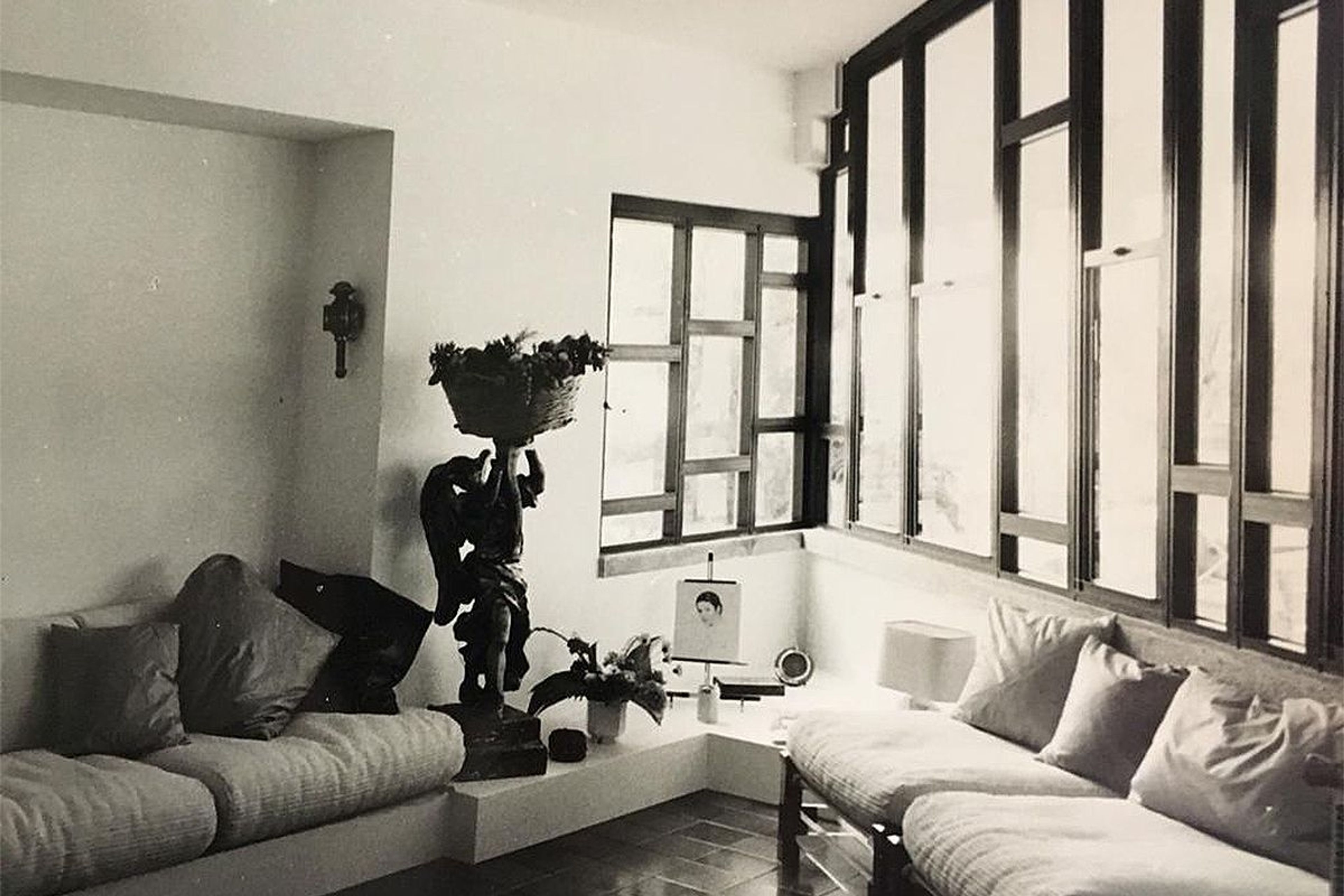
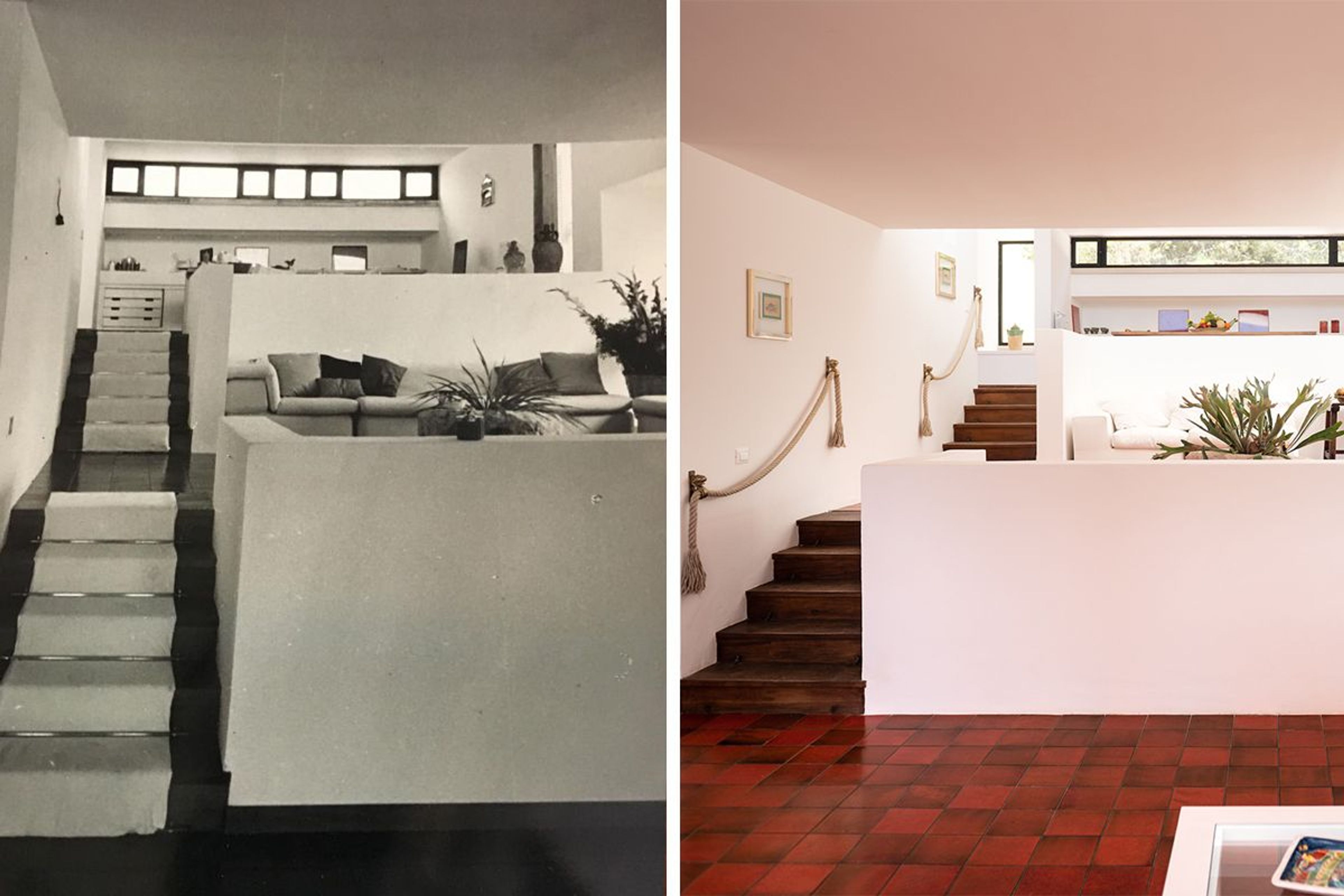
WHAT WAS HIS VISION FOR THE HOME?
RT: "For one, he built it in total respect of the land - it goes along the slope. There is a specific spot that he really wanted a certain way, because he knew my dad was in love with the sea: where the Carlo Scarpa dining table is, which is still there - when you sit at the table, you see across two levels, and with the windows being where they are, you can see both the sea and the sky. Scarpa was also a friend of Paolo's; they were all in the same circle of people in Venice. The table is a modern "Fratino" called Valmarana, and the red lacquer chairs are Kazuki by Kazuhide Takahama.
"The home was built in Pietra Calcatta Lecce, our local limestone. There is a huge pencilina [canopy] at the southern part of the house that shelters a V-shaped window - it's a major part of the house and it all looks out onto the main focus: the sea."
WHAT IS IT LIKE TO EXPERIENCE THE HOME?
RT: "You enter through a dirt street and there is a small pine forest in the back. You arrive almost at the level of the sea, at the main entrance which is the first level. There is a second and third level, and some levels in the middle. There are two living rooms and a dining room with a fireplace in the middle. There are two patios, one with a terrace where you can see the whole bay."
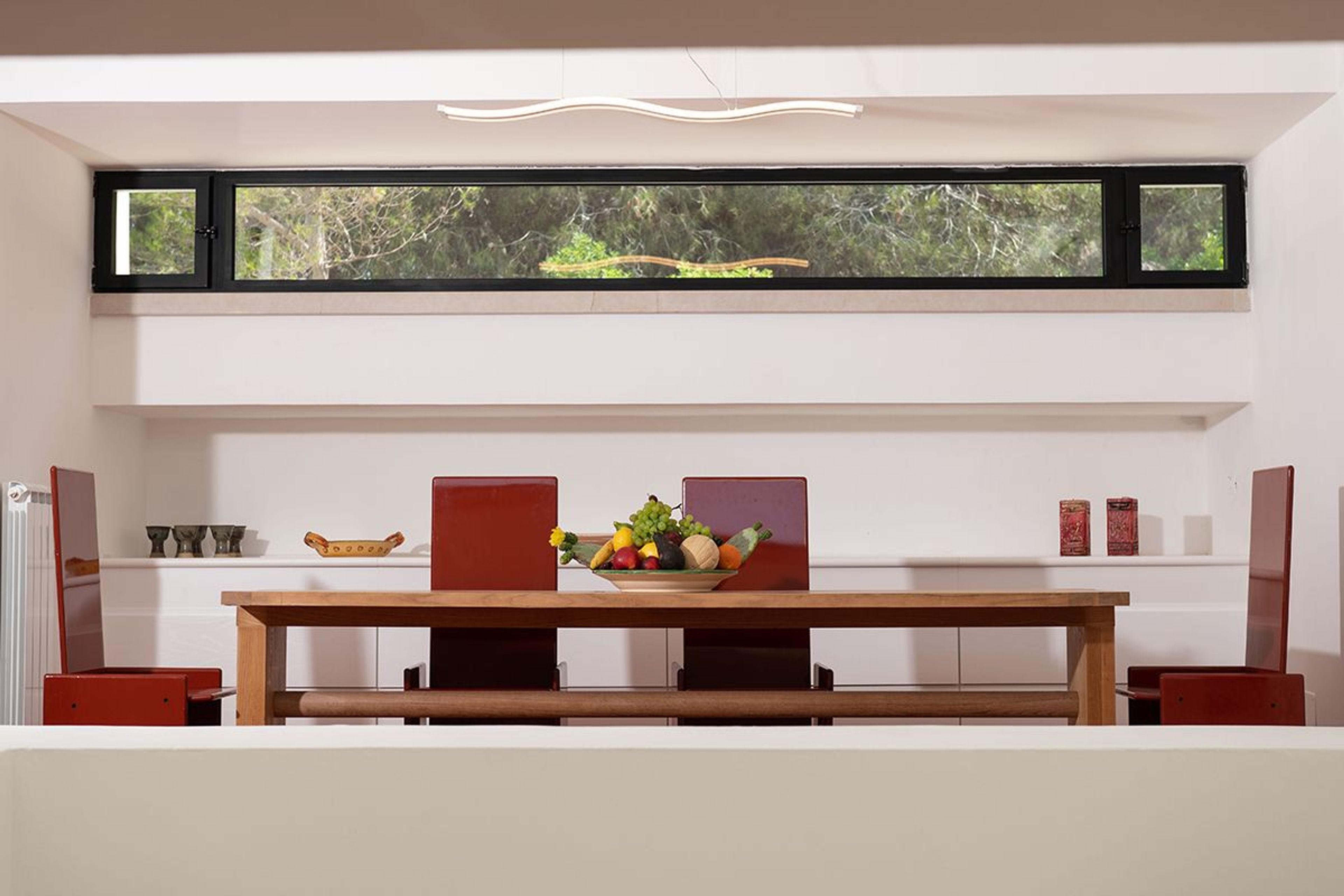
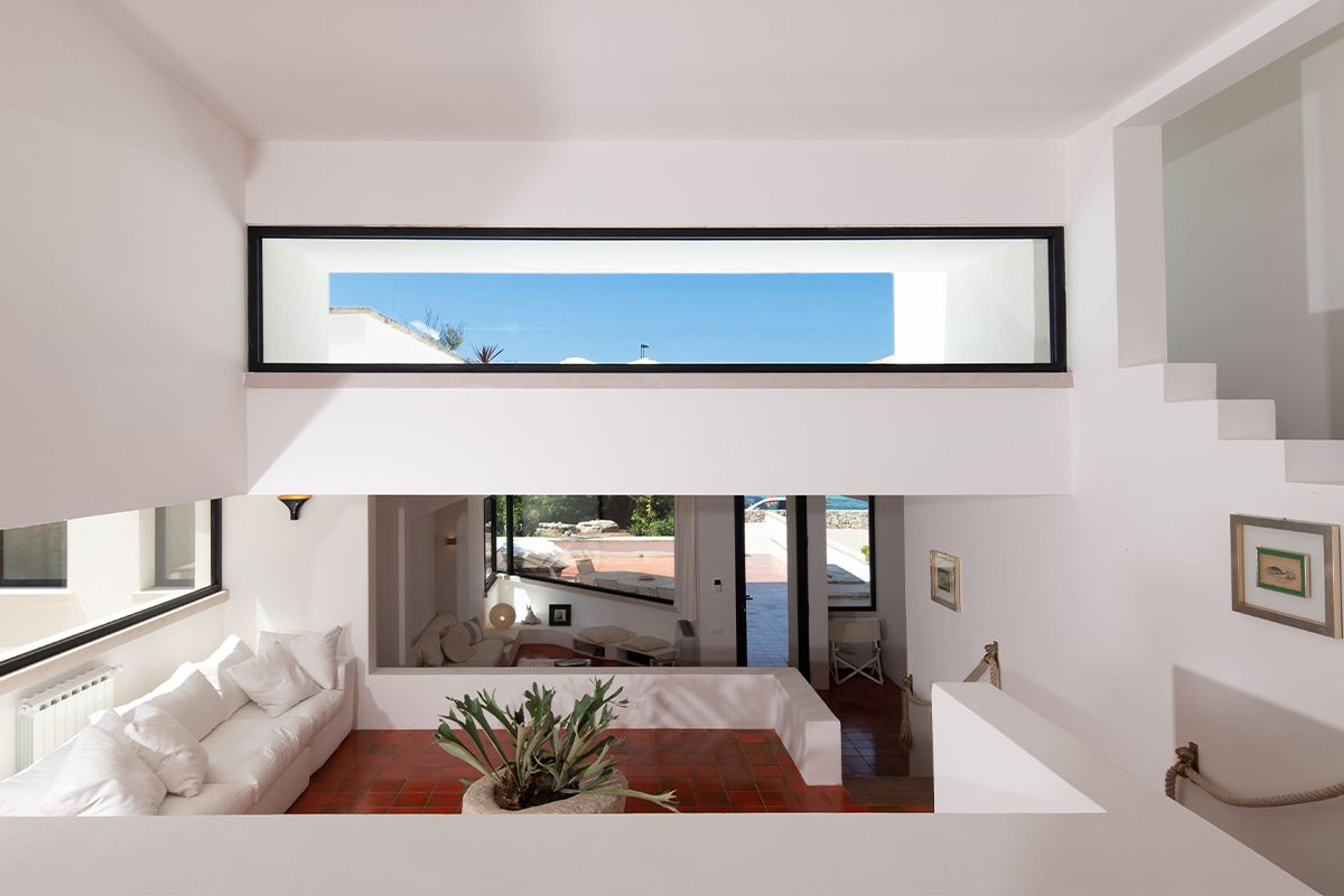
DOES SALMONE BIANCO STAND OUT AMONG OTHER ARCHITECTURE IN THE AREA?
RT: "It was never a fist in your face, especially because it flows with the natural inclination of the land. After Paolo built the home, he influenced many younger generations that have copied that style, so you will see other homes along the coast with a similar idea of the blocks and different levels.
"Something that is interesting is that the area was historically persecuted by the Turkish people. So the typical ancient structure was usually blocks of towers with very little windows so not to expose themselves. So it was cool to do an homage to light, the sea and the sky. The color is white because we're located next to Santa Maria de Leuca, which comes from the Greek word for white. The whole town used to be white because it was influenced by Greek culture."
OF COURSE, WE ALSO WANT TO KNOW ABOUT THAT FIREPLACE!
RT: "The fireplace is a double-faced fireplace, which means there is a specific glass made for high temperatures that divides it from indoor and out. So in the winter, you can have a fire inside while seeing all the way outside, and on the outside, say in the summer, you can use it for grilling fish."
WHEN THE HOME CAME INTO YOUR HANDS, DID YOU HAVE TO DO MUCH WORK ON IT?
RT: "We changed a few things, but nothing structurally. It is in total respect of what my uncle intended. We changed the position of the kitchen a little bit. Everything was minor; just a freshening up. We left the rope railings and even some of the rods my father used for fishing."
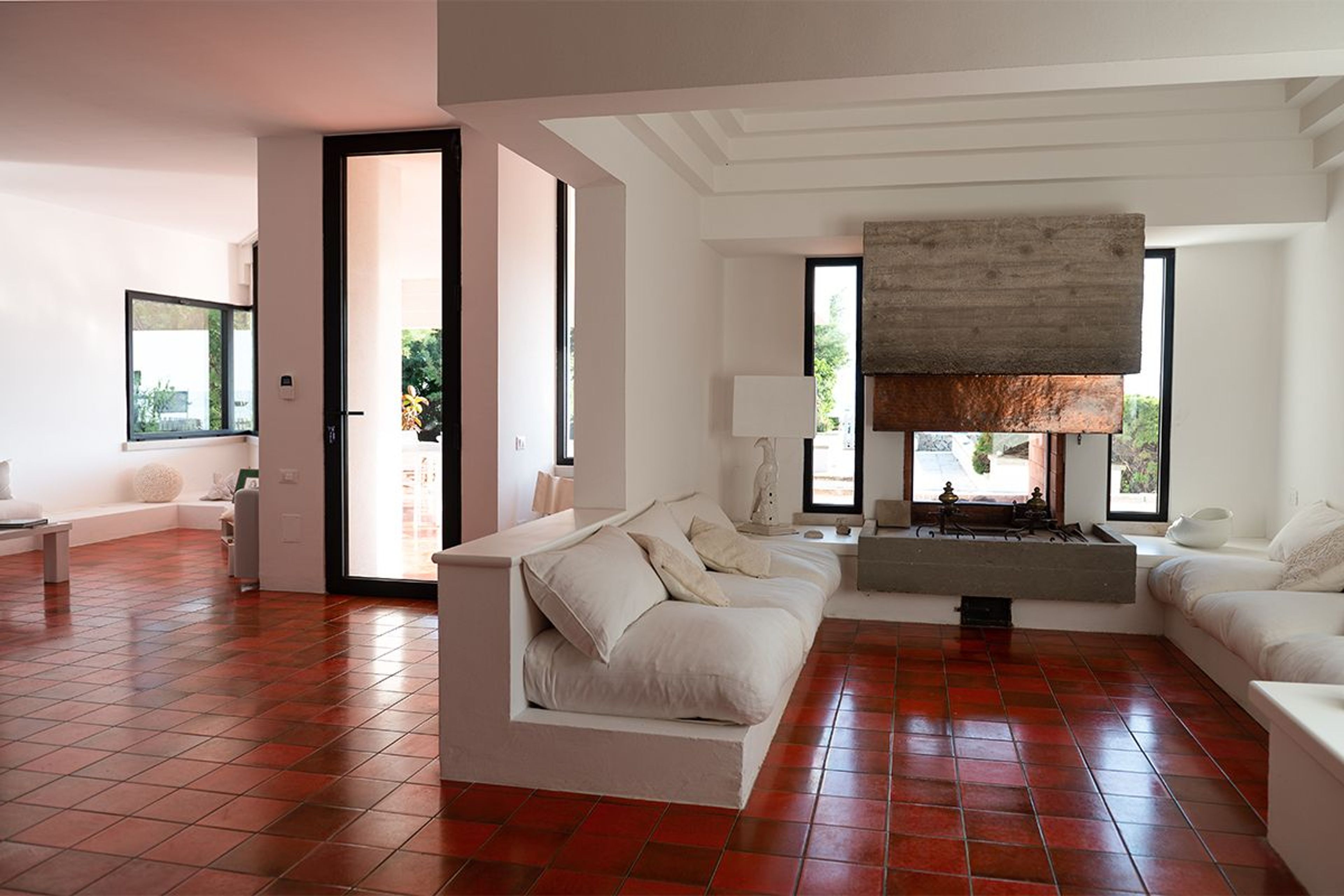
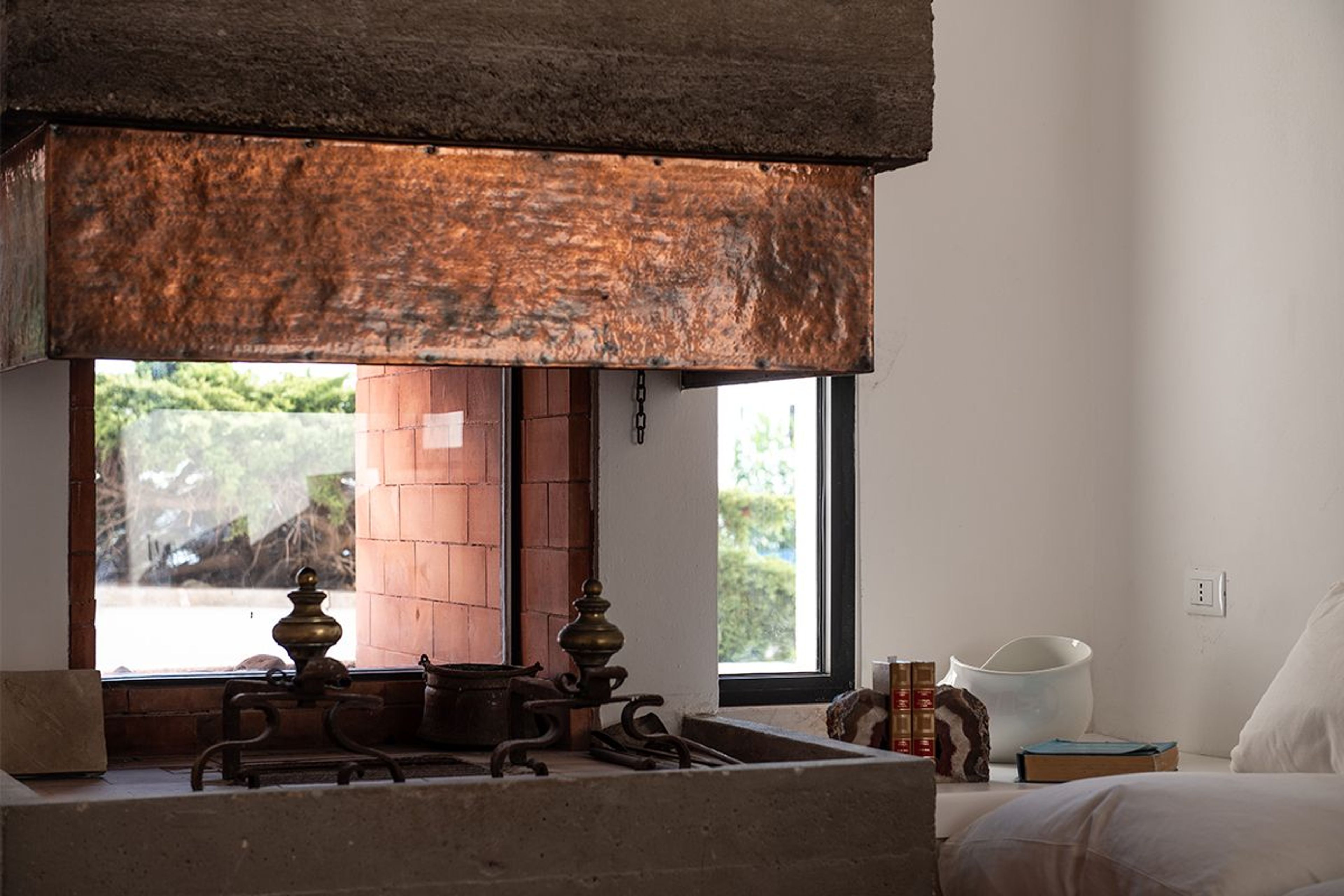
AND WHAT ABOUT THAT ANCIENT ROMAN ANCHOR OUTSIDE?
RT: "It was found off the bay, about 40-50 meters away from the house. My father bought it and it is aligned so that one tip is on the south and one is on the north. This was a passage place, and sometimes you find pieces of the past."
To book a stay at Salmone Bianco, click here.

